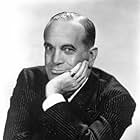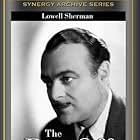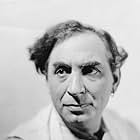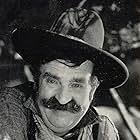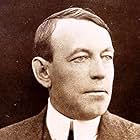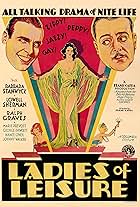A love triangle develops in a traveling minstrel troupe.A love triangle develops in a traveling minstrel troupe.A love triangle develops in a traveling minstrel troupe.
Allan Cavan
- Doctor
- (uncredited)
Richard Cramer
- Detective
- (uncredited)
Stanley Fields
- Pig Eyes
- (uncredited)
Lloyd Ingraham
- Deputy Sheriff
- (uncredited)
Ben Taggart
- Sheriff
- (uncredited)
Grant Withers
- Reporter in Trailer
- (uncredited)
Storyline
Did you know
- TriviaA preserved print of this film survives in the UCLA Film and Television archives.
- ConnectionsFeatured in Hollywood and the Stars: The Immortal Jolson (1963)
Featured review
Al Jolson occupies an unusual place in cinematic heritage. Dubbed the world's greatest entertainer, and certainly the most popular one in his day, Jolson will also forever remain famous for being the star of the world's first talking picture. And yet, due to much of his act and many of his screen appearances being in blackface, as well as the general quaintness of his style which owes far more to the musical hall than it does the screen, he is a figure whose work is today discussed far more than it is enjoyed.
Mammy was Jolson's fourth movie, and perhaps surprisingly is the first in which he had been paired with a major hit songwriter – in this case, Irving Berlin. The lesser-known Ray Henderson may have given Jolson his biggest hit with "Sonny Boy", but Irving's knack of mixing upbeat jollity with a bittersweet tug chimes in perfectly with Jolson's own style. The key song of Mammy is "Let Me Sing and I'm Happy" which is among Berlin's simplest both in melody and sentiment, and really suits Jolson's persona down to the ground.
Mammy also sees Jolson placed before a rather heavyweight director of dramas, namely Hungarian émigré Michael Curtiz, as opposed to comedy and musical specialist Lloyd Bacon who had helmed his previous two releases. Curtiz's tendency to fill up spaces with layers of extras and assorted business, tightly framing actors amid their settings isn't really what this picture needs, but nevertheless the director adds a few little touches to help ease out the story's emotions. Most notably we have several facial close-ups, a couple of Louise Dresser and one of Lois Moran. A pretty standard trick, but these are not just any close-ups. Take the one of Dresser after she has said goodbye to Jolson. Behind her we see some people walking to screen left, after which we cut to the train pulling away screen right, making it visually appear that the two shots are moving in opposite directions. Curtiz was also known to encourage restrained performances from his cast, and indeed we do get some beautifully understated turns from silent stars Louise Dresser and Hobart Bosworth. Even Al himself is a good deal more subtle under the influence of Curtiz.
However, the real key to Mammy's appeal – the reason why these pictures were more than just Jolson showcases – is the way that the songs are placed within the narrative. This is of course long before the days when the "integrated" musical was commonplace, and yet the emotional weight of each song has undergone consideration, probably by original "idea" writer Berlin, such story-based song deployment being another of his talents. Jolson's performance of "Looking at You" ironically comes just after his inadvertently putting himself in an embarrassing situation with Lois Moran, and the utter inappropriateness of the song at that moment increases that feeling of awkwardness. "Let Me Sing and I'm Happy" as well as being Jolson's introductory number, is reprised twice, firstly when he is about to be arrested, and again at the end of the picture – each time for completely different impact due to its placement. And this is something Jolson himself is clearly aware of, putting a veneer of professionalism over each rendition, but allowing his character's emotional state to show through according to the context in which the song is sung.
This may be one of the finest Jolson features, but ironically it was part of a downward turn in his career. His pictures were becoming repetitive, and now a few years into the talkie era he was less of a novelty. He would disappear from screens for a few years before reinventing himself as a more conventional musical star for the mid-30s, more or less divorced from his music-hall roots. Still, Mammy provides an opportunity to see him as he was to early audiences, before he even stepped in front of a camera, taking simple, hackneyed routines, pouring in his heart and soul and making them his own.
Mammy was Jolson's fourth movie, and perhaps surprisingly is the first in which he had been paired with a major hit songwriter – in this case, Irving Berlin. The lesser-known Ray Henderson may have given Jolson his biggest hit with "Sonny Boy", but Irving's knack of mixing upbeat jollity with a bittersweet tug chimes in perfectly with Jolson's own style. The key song of Mammy is "Let Me Sing and I'm Happy" which is among Berlin's simplest both in melody and sentiment, and really suits Jolson's persona down to the ground.
Mammy also sees Jolson placed before a rather heavyweight director of dramas, namely Hungarian émigré Michael Curtiz, as opposed to comedy and musical specialist Lloyd Bacon who had helmed his previous two releases. Curtiz's tendency to fill up spaces with layers of extras and assorted business, tightly framing actors amid their settings isn't really what this picture needs, but nevertheless the director adds a few little touches to help ease out the story's emotions. Most notably we have several facial close-ups, a couple of Louise Dresser and one of Lois Moran. A pretty standard trick, but these are not just any close-ups. Take the one of Dresser after she has said goodbye to Jolson. Behind her we see some people walking to screen left, after which we cut to the train pulling away screen right, making it visually appear that the two shots are moving in opposite directions. Curtiz was also known to encourage restrained performances from his cast, and indeed we do get some beautifully understated turns from silent stars Louise Dresser and Hobart Bosworth. Even Al himself is a good deal more subtle under the influence of Curtiz.
However, the real key to Mammy's appeal – the reason why these pictures were more than just Jolson showcases – is the way that the songs are placed within the narrative. This is of course long before the days when the "integrated" musical was commonplace, and yet the emotional weight of each song has undergone consideration, probably by original "idea" writer Berlin, such story-based song deployment being another of his talents. Jolson's performance of "Looking at You" ironically comes just after his inadvertently putting himself in an embarrassing situation with Lois Moran, and the utter inappropriateness of the song at that moment increases that feeling of awkwardness. "Let Me Sing and I'm Happy" as well as being Jolson's introductory number, is reprised twice, firstly when he is about to be arrested, and again at the end of the picture – each time for completely different impact due to its placement. And this is something Jolson himself is clearly aware of, putting a veneer of professionalism over each rendition, but allowing his character's emotional state to show through according to the context in which the song is sung.
This may be one of the finest Jolson features, but ironically it was part of a downward turn in his career. His pictures were becoming repetitive, and now a few years into the talkie era he was less of a novelty. He would disappear from screens for a few years before reinventing himself as a more conventional musical star for the mid-30s, more or less divorced from his music-hall roots. Still, Mammy provides an opportunity to see him as he was to early audiences, before he even stepped in front of a camera, taking simple, hackneyed routines, pouring in his heart and soul and making them his own.
Details
- Runtime1 hour 24 minutes
- Color
Contribute to this page
Suggest an edit or add missing content










